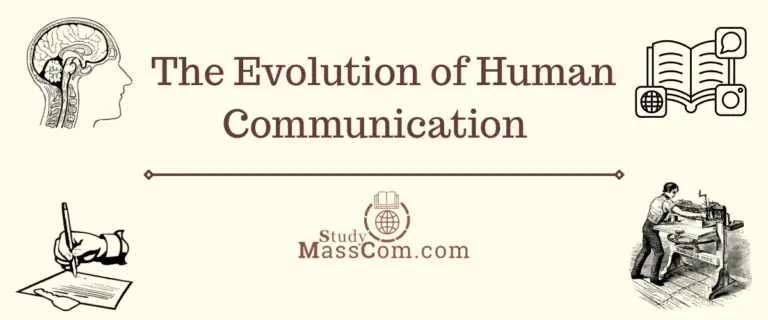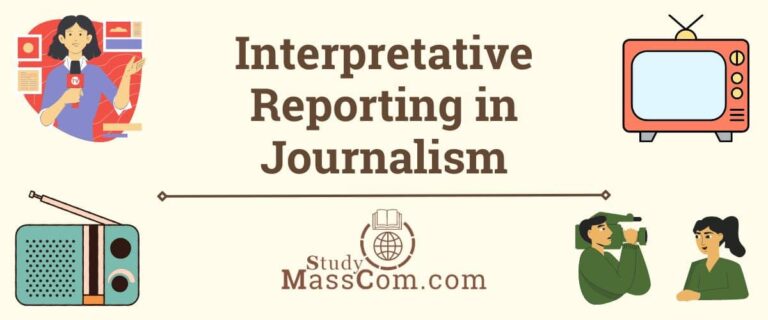Seven Pillars of Newsworthiness
Introduction
In the vast world of journalism, not every piece of information gets the honor of becoming news. With countless stories and events happening every day, journalists face the challenging task of determining what is newsworthy and what is not. To navigate this daunting landscape, journalists rely on a set of criteria known as the “Seven Pillars of Newsworthiness.” These pillars serve as a guide to identifying stories that are worth reporting and capturing the attention of audiences. In this blog, we will explore these seven pillars and unveil the secrets behind creating compelling news.

Definition of Newsworthiness
Newsworthiness is a term used to describe the criteria or qualities that make a piece of information or an event worthy of being considered news. It is the set of characteristics or traits that determine whether a story is deemed important, interesting, or relevant enough to be reported and shared with the public. Journalists and news organizations evaluate the newsworthiness of a story to prioritize its coverage and determine what will resonate with the audience.
How to Determine Newsworthiness
While the specific criteria for newsworthiness may vary slightly depending on the context and cultural factors, there are several common elements that contribute to the overall assessment:
- Relevance: News should be relevant to the audience’s interests, needs, and concerns. It should have an impact on individuals, communities, or society as a whole.
- Timeliness: News is typically associated with recent events or developments. The element of timeliness emphasizes the importance of covering stories that are happening now or have just occurred.
- Significance: The significance of a story lies in its potential impact. News that has far-reaching consequences or affects a large number of people is often considered more newsworthy.
- Proximity: The proximity of a story refers to its geographic or emotional closeness to the audience. News that happens in or directly affects the local community or the immediate surroundings of the readers is often given higher priority.
- Human Interest: Stories that evoke emotions, resonate with personal experiences, or have a unique human element are considered newsworthy. Human interest stories have the power to engage and captivate the audience.
- Conflict: News often involves conflicts, whether they are political, social, or interpersonal. Conflicts create tension, spark debate, and attract attention.
- Novelty: Stories that offer fresh perspectives, present new information, or challenge established norms are more likely to be considered newsworthy. Novelty adds an element of interest and surprise to news stories.
- Prominence: News involving prominent individuals, such as politicians, celebrities, or influential figures, tends to attract attention due to the public’s interest in their actions and the potential impact they may have.
Seven Pillars of Newsworthiness
It’s important to note that newsworthiness is subjective to some extent, and different news organizations may prioritize these criteria differently based on their target audience and editorial policies. However, the overall goal of determining newsworthiness is to provide informative, engaging, and relevant content to the public. Each aspect of newsworthiness is described further below:
#1 Timeliness
The first pillar of newsworthiness is timeliness. News is inherently connected to time. Stories that are recent or have just occurred are often considered more newsworthy than those that are stale. Timeliness creates a sense of urgency, capturing the audience’s interest and reflecting the current state of affairs. Breaking news, significant developments, and time-sensitive events often fall under this pillar, driving the news cycle and shaping public discourse.
#2 Significance
The significance of a story plays a crucial role in determining its newsworthiness. Events or issues that have a substantial impact on individuals, communities, or society as a whole are more likely to be considered newsworthy. Examples include political elections, major policy changes, natural disasters, scientific breakthroughs, and social movements. Significance ensures that news stories resonate with the audience and have a lasting impact.
#3 Proximity
Proximity refers to the physical or emotional closeness of a story to the audience. Stories that occur closer to the audience’s location or have a direct impact on their lives are often deemed more newsworthy. This pillar recognizes the human tendency to prioritize information that is relevant to one’s immediate surroundings. Local news, community events, and regional issues are prime examples of stories that leverage proximity to capture attention.
#4 Human Interest
Stories that evoke strong emotions, connect with personal experiences or feature unique human elements fall under the pillar of human interest. This pillar recognizes the power of storytelling and the importance of appealing to the audience’s empathy, curiosity, or fascination. Human interest stories can explore themes such as human triumphs, struggles, extraordinary achievements, or heartwarming acts of kindness. They provide a deeper understanding of the human condition and often resonate with a wide range of readers.
#5 Conflict
Conflict is an inherent component of news stories. Whether it is a political dispute, social controversy, or even a competitive sports match, conflicts are attention-grabbing and contribute to the newsworthiness of a story. The presence of opposing views, contrasting interests, or clashes between individuals or groups often attracts readers’ attention, as it sparks debate, encourages critical thinking, and allows for diverse perspectives to be explored.
#6 Novelty
Novelty refers to stories that offer a fresh perspective or present new information that has not been widely reported before. News that breaks new ground, reveals surprising discoveries, or challenges existing beliefs tends to captivate audiences. Innovative inventions, breakthrough research, and unique angles on familiar topics fall under this pillar. Novelty provides a sense of discovery, making readers feel informed and intrigued by the latest developments.
#7 Prominence
Prominence deals with the prominence or fame of individuals or entities involved in a story. News involving notable figures such as politicians, celebrities, business leaders, or influential personalities often attracts attention due to their public profile or reputation. Prominence is closely tied to the audience’s interest in the lives and actions of high-profile individuals, as their actions may have a significant impact on society or elicit public curiosity.
Newsworthiness and Media Law
Newsworthiness and media law are interconnected concepts that influence how news is reported, disseminated, and protected. While newsworthiness focuses on the editorial decisions and criteria for selecting and presenting news, media law encompasses the legal framework that governs the rights, responsibilities, and limitations of media organizations and practitioners. Here are some key points regarding the relationship between newsworthiness and media law:
Freedom of the Press
Many legal systems recognize and protect the freedom of the press as a fundamental right. Freedom of the press enables journalists to report on matters of public interest without undue interference from the government or other entities. This freedom allows media organizations to determine the newsworthiness of stories and exercise editorial discretion.
Defamation and Libel Laws
Media law often addresses issues of defamation and libel, which pertain to false statements that harm an individual’s reputation. Journalists must be cautious when reporting potentially damaging information about individuals or organizations to avoid legal consequences. Balancing newsworthiness and the responsibility to report accurate information is crucial in navigating defamation and libel laws.
Privacy Laws
Privacy laws protect individuals’ right to privacy and regulate the dissemination of private information. Journalists need to consider privacy concerns when reporting on personal matters or sensitive information. Newsworthiness should be weighed against an individual’s right to privacy, and media organizations must adhere to the applicable legal standards.
Intellectual Property
Media law covers intellectual property rights, including copyright and trademark laws. Journalists must respect copyright protections when using third-party materials such as images, videos, or written works. Proper attribution and adherence to fair use guidelines are important considerations in determining newsworthiness while respecting intellectual property rights.
Access to Information
Media law often addresses the right to access information held by public bodies or officials. This right promotes transparency and accountability in governance. Journalists rely on access to information laws to gather and report on news stories of public interest. Newsworthiness is closely connected to the public’s right to know and the ability of journalists to access relevant information.
Prior Restraints and Censorship
Media law also deals with issues of prior restraints and censorship. In some jurisdictions, governments may impose restrictions on the publication or dissemination of certain news stories or materials. These restrictions can hinder the determination of newsworthiness and limit the freedom of the press.
Ethical Considerations
While not strictly legal, ethical considerations play a significant role in journalism. Journalists and media organizations often adhere to professional codes of ethics that guide their practices, including considerations of newsworthiness. Ethical principles, such as accuracy, fairness, and responsible reporting, help shape editorial decisions and ensure that newsworthiness aligns with journalistic integrity.
Examples of Newsworthiness
Here are some examples of newsworthy stories that demonstrate different aspects of newsworthiness:
| Pillars of Newsworthiness | Examples |
| Timeliness | A breaking news story about a natural disaster, such as a hurricane or earthquake, impacting a populated area, causing widespread destruction and endangering lives. |
| Significance | The announcement of a major government policy change that will have far-reaching effects on healthcare, education, or the economy of a country. |
| Proximity | A local story covering a community-driven initiative to address a pressing issue, such as a neighborhood organizing a cleanup campaign to combat pollution or a grassroots movement advocating for safer streets. |
| Human Interest | A heartwarming story about an individual or group overcoming adversity, such as a cancer survivor running a marathon to raise funds for research or a community rallying together to support a family in need. |
| Conflict | Coverage of a highly contentious political election, including debates between candidates, contrasting ideologies, and the impact of the election outcome on policy decisions and public opinion. |
| Novelty | A scientific breakthrough, such as a new medical treatment, or a technological innovation that promises to revolutionize an industry or improve people’s lives in a significant way. |
| Prominence | Reporting on the actions or statements of influential figures, such as a celebrity using their platform to raise awareness about a social cause or a business tycoon launching a groundbreaking venture. |
Conclusion
In conclusion, newsworthiness serves as a set of criteria that helps determine which stories are considered important, relevant, and captivating enough to be presented as news. Journalists and news organizations evaluate various factors, including timeliness, significance, proximity, human interest, conflict, novelty, and prominence, to make editorial decisions about what stories to cover.
Understanding newsworthiness is crucial for journalists as they strive to deliver informative and engaging content to their audience. By assessing the timeliness of events, the impact and significance of stories, the emotional and human connection, the presence of conflicts, the uniqueness or novelty, the proximity to the audience, and the involvement of prominent figures, journalists can effectively select and present news that resonates with their readers, viewers, or listeners.
FAQs
Newsworthiness is a term used to describe the criteria or qualities that make a piece of information or an event worthy of being considered news. It is the set of characteristics that determine whether a story is deemed important, interesting, or relevant enough to be reported and shared with the public. Journalists and news organizations evaluate the newsworthiness of a story to prioritize its coverage and determine what will resonate with the audience. The most important aspects in order to determine newsworthiness include timeliness, significance, proximity, human interest, conflict, novelty, and prominence.
No, newsworthiness is not outdated. It continues to be a fundamental principle in journalism and media. Newsworthiness refers to the criteria used by news organizations to determine which events or stories are worthy of reporting to the public. While the specific factors considered may evolve over time due to changing technologies and societal norms, the concept of newsworthiness remains relevant in shaping news coverage.
In the digital age, newsworthiness is influenced by several factors that are specific to the digital media landscape. Here are some key drivers of newsworthiness in the digital age:
1. Virality and Shareability: In the age of social media, news stories that have the potential to go viral or generate high levels of sharing and engagement are often considered more newsworthy. Content that has a strong emotional appeal, is entertaining or evokes a strong reaction tends to spread rapidly on social platforms.
2. User-Generated Content: The rise of user-generated content through social media platforms and citizen journalism has influenced newsworthiness. News organizations often look to user-generated content, such as eyewitness videos or firsthand accounts, to provide real-time and authentic perspectives on events.
3. Clicks and Traffic: In the digital age, news organizations rely on web traffic and audience engagement metrics to measure the success of their content. Stories that are expected to generate high click-through rates and attract a large audience tend to be prioritized, potentially influencing the perception of newsworthiness.
4. Search Engine Optimization (SEO): News organizations often optimize their content for search engines to improve discoverability. Stories that align with popular search terms or trending topics are more likely to be seen as newsworthy due to their potential to attract organic traffic from search engine results.
5. Personalization and Targeting: With the advent of algorithms and data-driven technologies, news organizations can personalize content based on user preferences and interests. Stories that align with a user’s past behavior or browsing history may be prioritized, enhancing their perceived newsworthiness for that particular individual.
6. Real-Time Reporting: The digital age enables real-time reporting, allowing news organizations to cover events as they unfold. Stories that provide up-to-the-minute information and live updates tend to be regarded as more newsworthy, as they cater to the audience’s desire for immediate and relevant news.
7. Interactivity and Engagement: Digital platforms offer opportunities for audience participation, such as comments, likes, and shares. News stories that generate a high level of engagement and foster discussions among users are often seen as newsworthy due to their ability to capture public interest and create a sense of community around the content.






